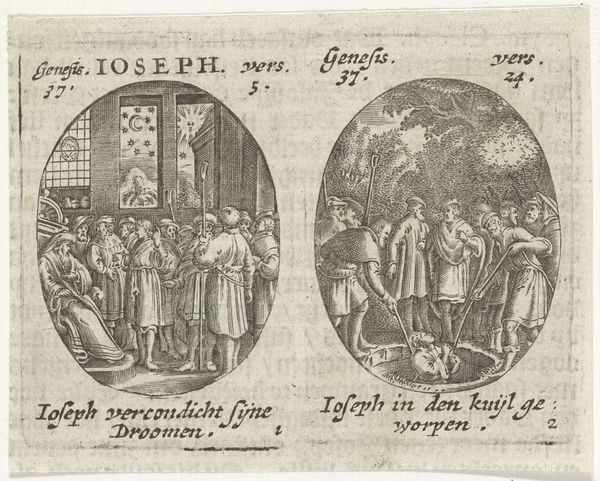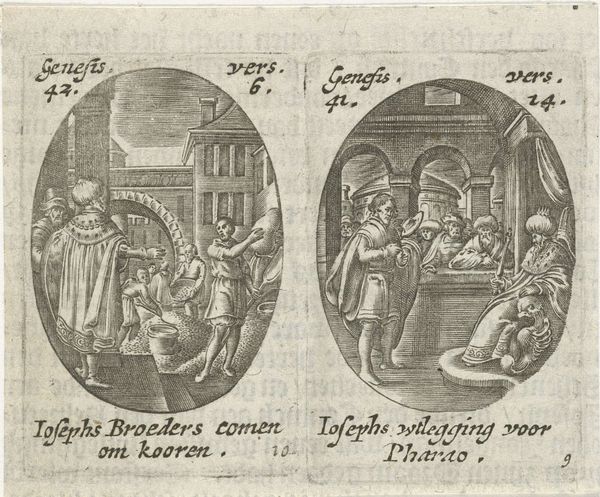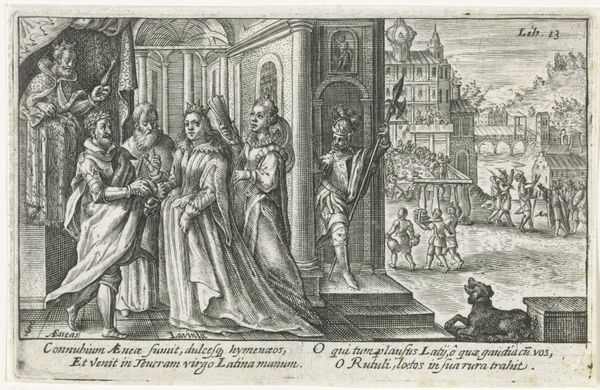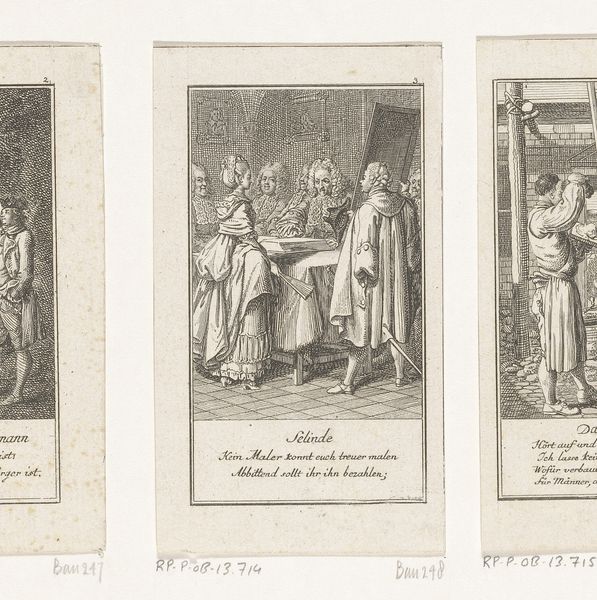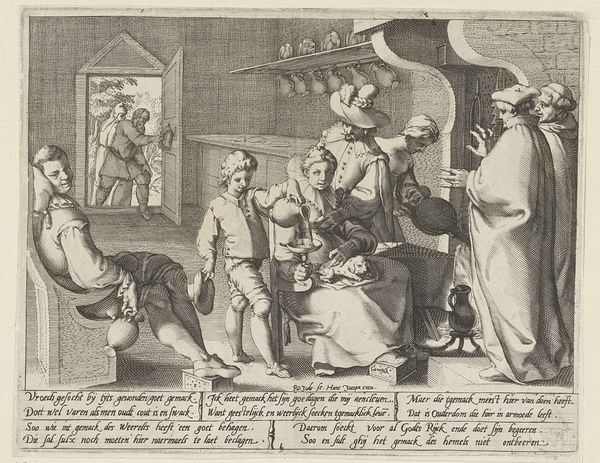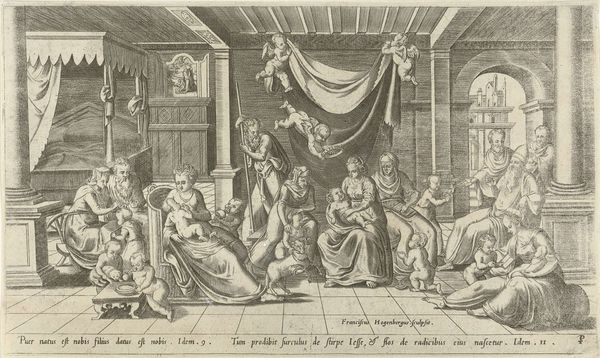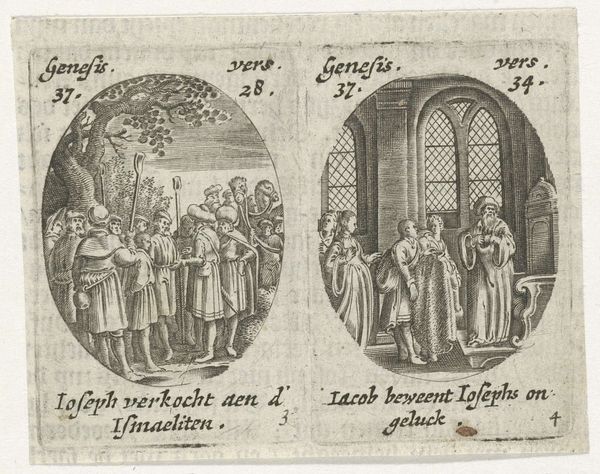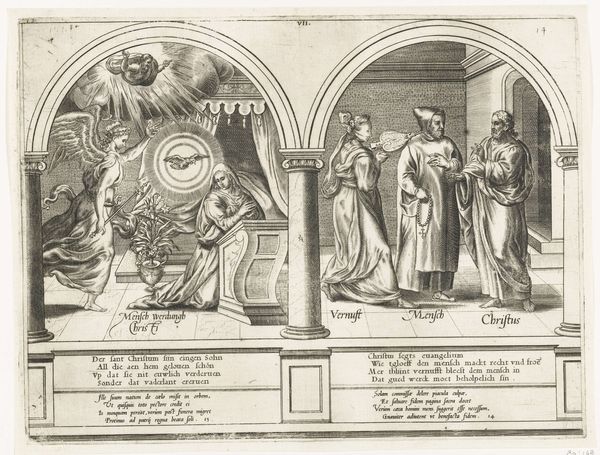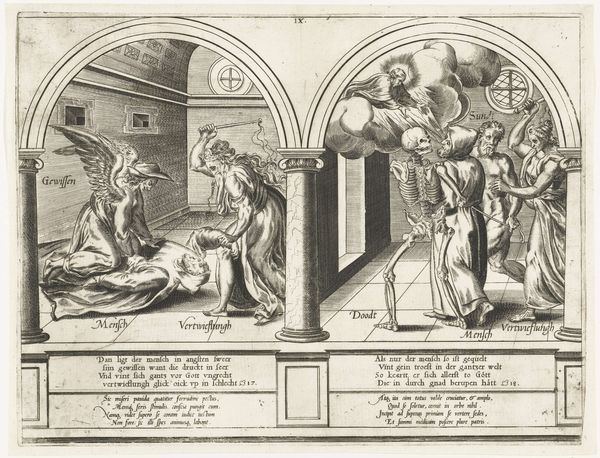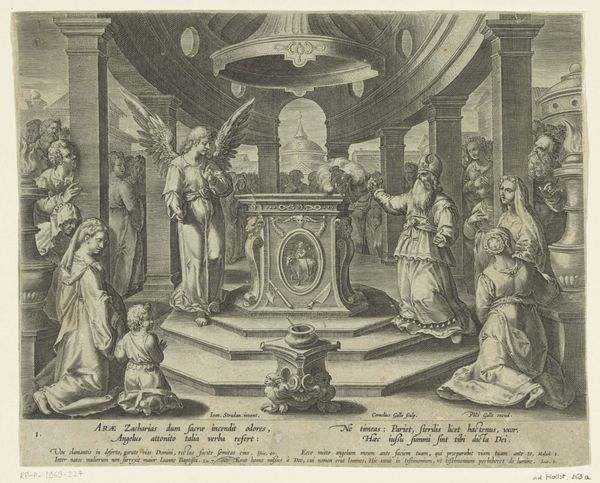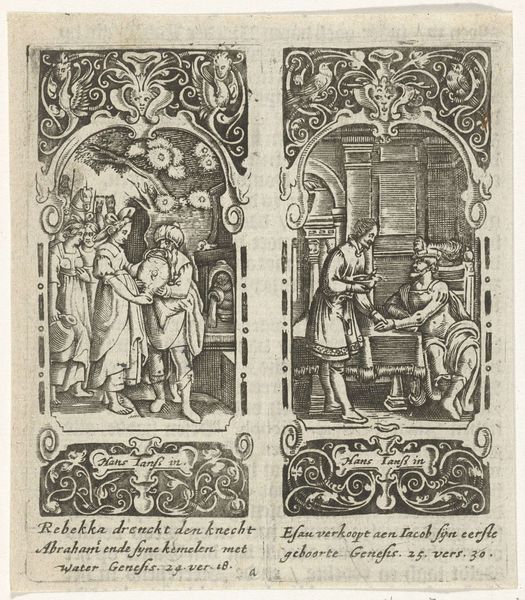
Jozef en de vrouw van Potifar / De vrouw van Potifar beschuldigt Jozef 1615 - 1651
0:00
0:00
hansjanssen
Rijksmuseum
print, engraving
#
baroque
# print
#
old engraving style
#
figuration
#
history-painting
#
engraving
Dimensions: height 52 mm, width 35 mm, height 53 mm, width 35 mm
Copyright: Rijks Museum: Open Domain
Curator: This engraving, “Joseph and Potiphar’s Wife” by Hans Janssen, from the early to mid-17th century, presents a fascinating study in class and labour. Editor: Yes, it’s intriguing! The piece depicts two scenes: Joseph fleeing Potiphar’s wife and then Joseph’s coat being presented as evidence. I find the starkness of the engraving style adds to the drama. What strikes you most about it? Curator: The printmaking process itself is key. Engravings like this were often mass-produced, designed for a wider audience than paintings. It’s a readily available, reproducible form tied to the rise of literacy and information dissemination, almost an early form of social media. Consider the skill of the engraver—the intense labour and precision needed to transfer these images. Were prints like these affordable? Were these in middle-class homes? Editor: That’s interesting; I hadn’t thought about the print as a commodity itself. Did the content also reflect social dynamics of the time? Curator: Absolutely. The biblical story speaks to themes of power, accusation, and social mobility. Joseph, a slave, finds himself embroiled in the affairs of the Egyptian elite. Think about how garments—specifically Joseph's coat—feature as critical pieces of evidence. It represents not just physical covering but also social status and a token of deceit. The textile itself holds narrative weight. Editor: So, the very materials and methods used in the artwork—engraving and cloth—highlight power structures and social narratives within the story? Curator: Precisely. We can use our knowledge to dig deeper into how art production has been viewed at different stages throughout time, to appreciate and learn. It is fascinating how different views can shift perceptions about our world. Editor: I learned a lot thinking about not just the story, but the role of the material in creating its cultural meaning.
Comments
No comments
Be the first to comment and join the conversation on the ultimate creative platform.
